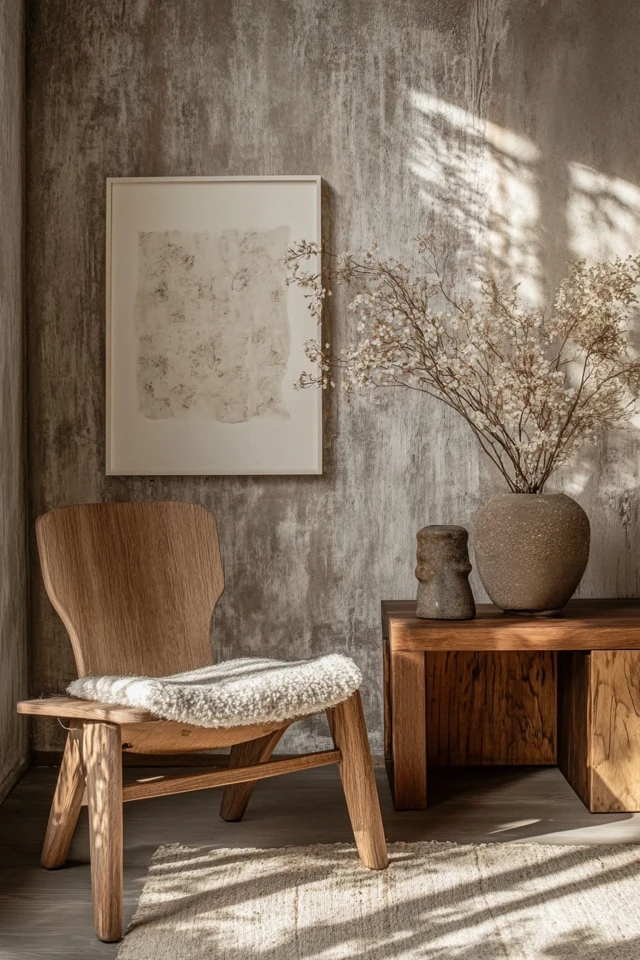Wood accents are a cornerstone of Scandinavian design, bringing warmth, texture, and a connection to nature into minimalist spaces. From light oak floors to handcrafted wooden decor, these elements soften the clean lines and neutral tones typical of Nordic interiors, creating a cozy and welcoming atmosphere.
When I began adding wood accents to my own home, the transformation was instant. A simple light wood coffee table paired with a few natural decor pieces made my living room feel not only brighter but also more grounded and inviting. Wood has a way of adding depth and character without overpowering the minimalist aesthetic.
In this guide, I’ll show you how to incorporate wood accents into your Scandinavian spaces to create a harmonious balance between warmth and simplicity.
Why Wood Accents Work in Scandinavian Design
Key Benefits
- Warmth: Wood counteracts the coolness of neutral color schemes.
- Texture: Adds depth and tactile interest to clean, minimalist spaces.
- Versatility: Works seamlessly with other natural materials like stone, wool, and linen.
- Timeless Appeal: Wood never goes out of style, making it a lasting design choice.
1. Choose Light Wood Flooring
Why It Works
Light wood floors are a staple of Scandinavian design, creating an open, airy foundation for any space.
How to Style
- Opt for light-toned woods like oak, birch, or ash.
- Use wide planks for a modern, cohesive look.
- Avoid high-gloss finishes; instead, go for matte or satin for a natural feel.
Example:
A living room with white walls and light oak flooring exudes Scandinavian elegance while feeling warm and inviting.
2. Add Wooden Furniture
Why It Works
Furniture made from natural wood brings a touch of craftsmanship and authenticity to Scandinavian interiors.
How to Style
- Choose a light wood dining table or coffee table as a centerpiece.
- Pair a wooden bench with soft textiles for extra seating.
- Opt for chairs or stools with simple designs and natural finishes.
Styling Tip:
A round oak coffee table paired with a gray linen sofa strikes the perfect balance between warmth and minimalism.
Picture Gallery
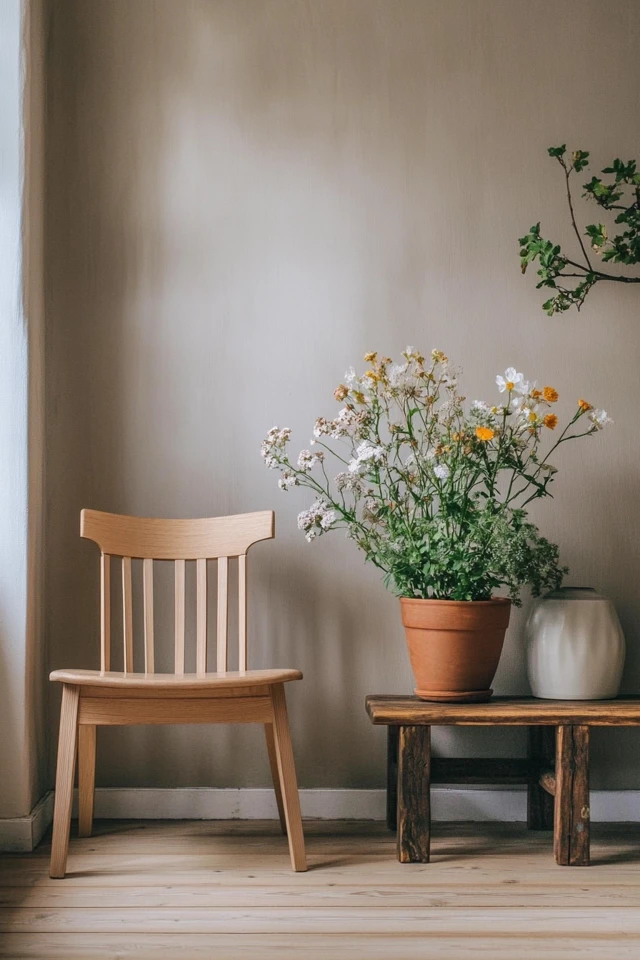
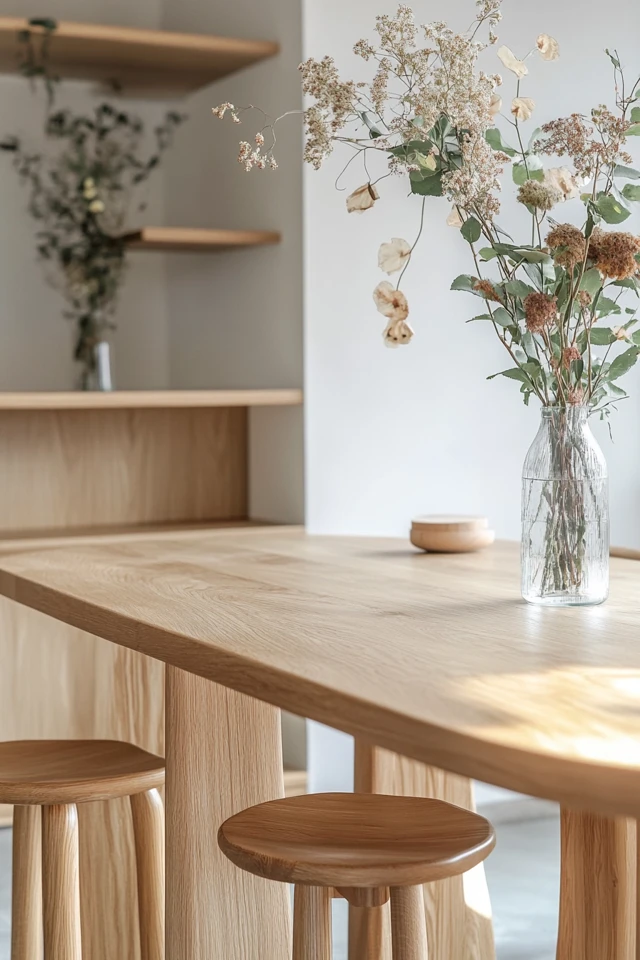
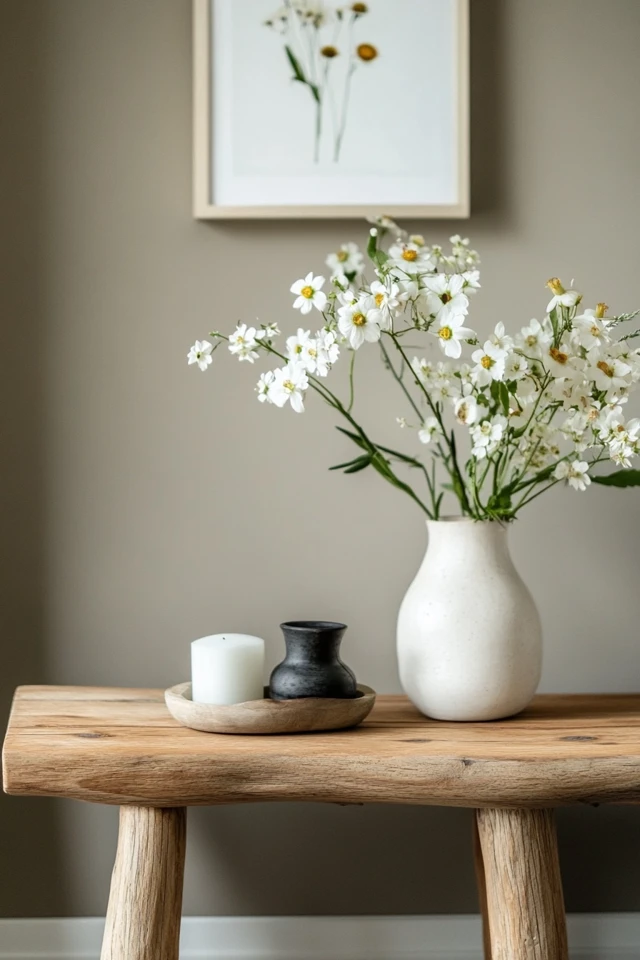
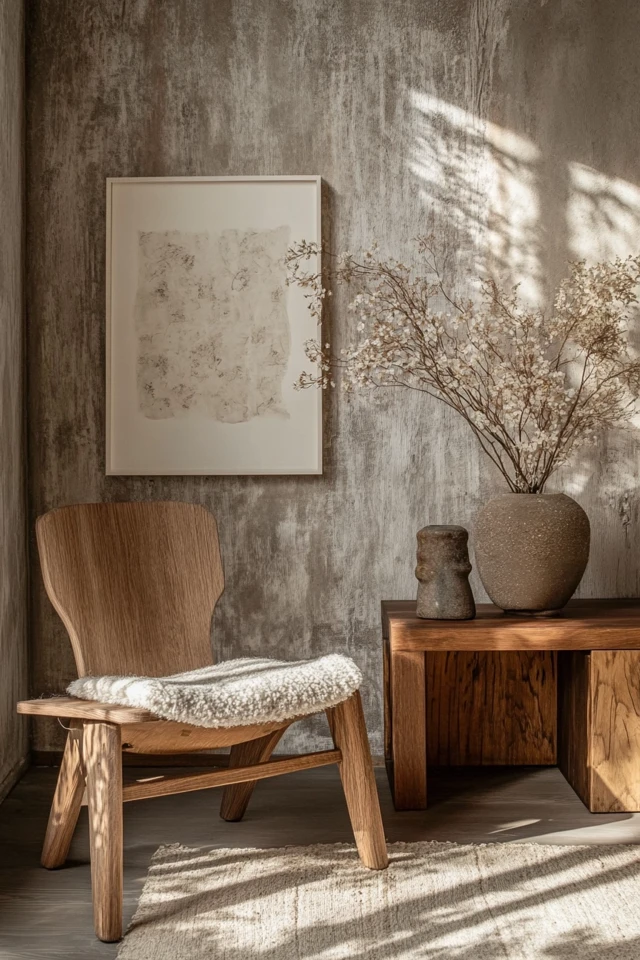
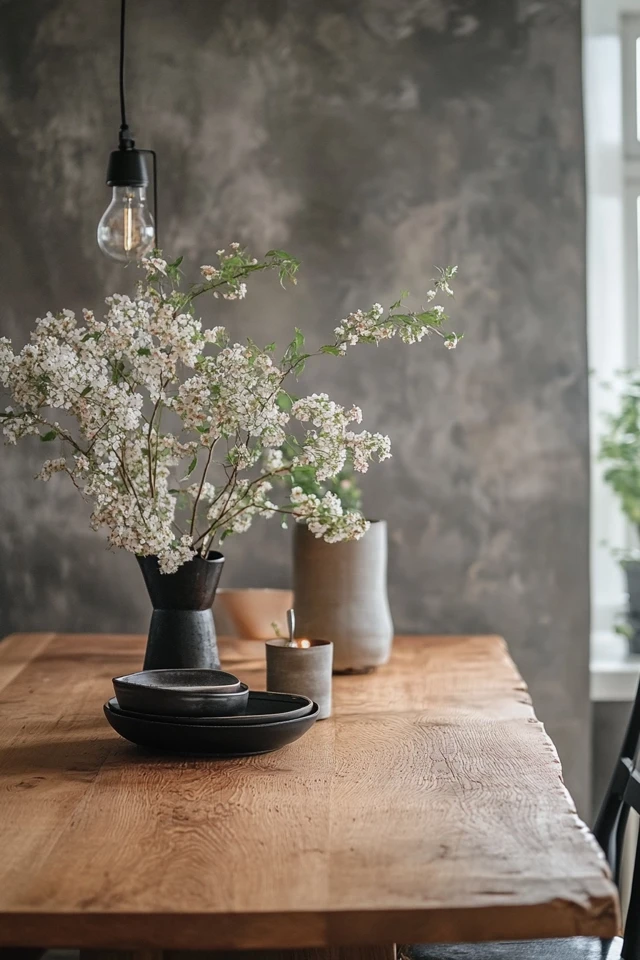
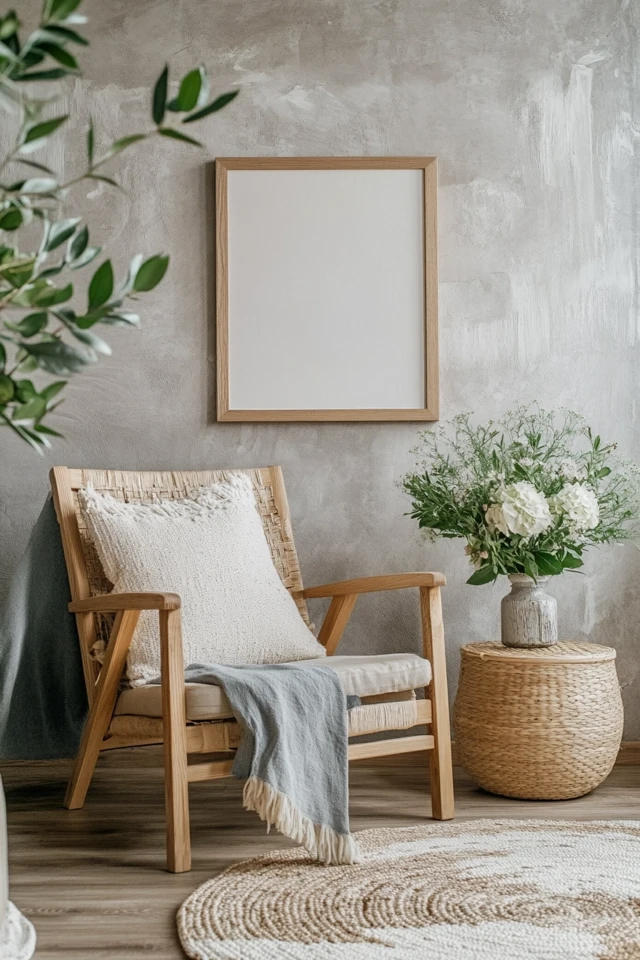
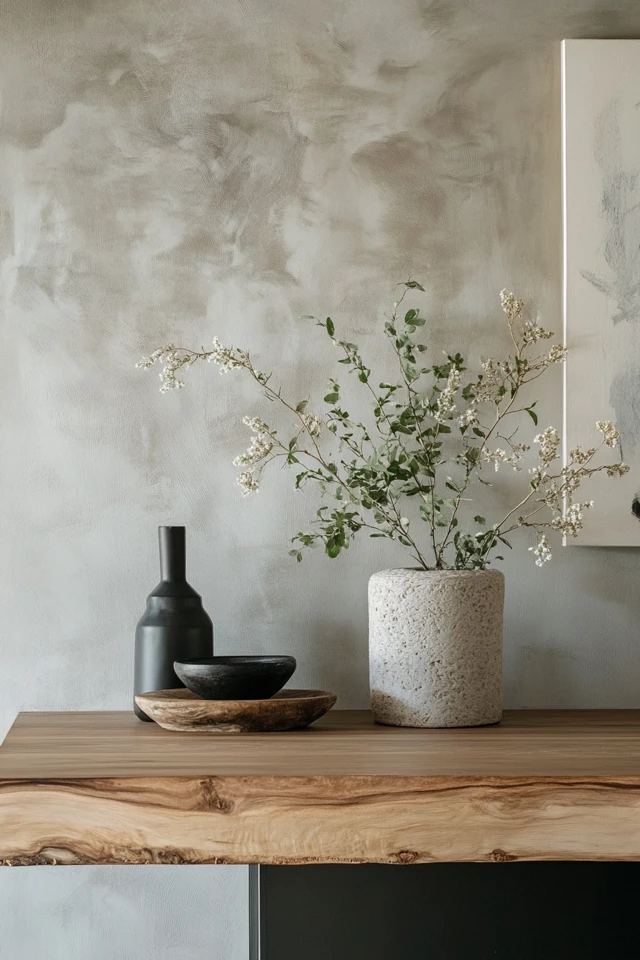
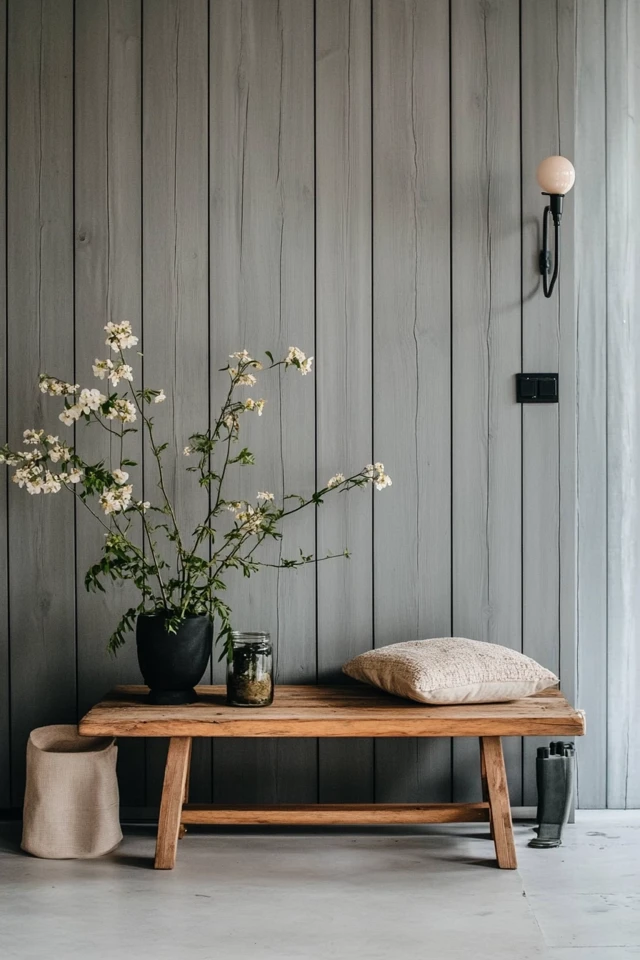
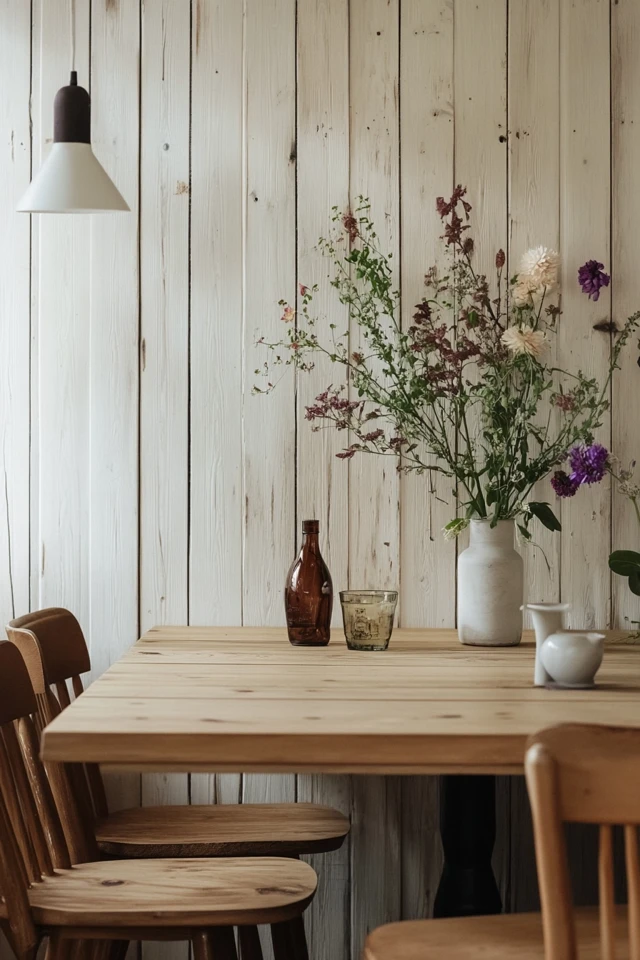

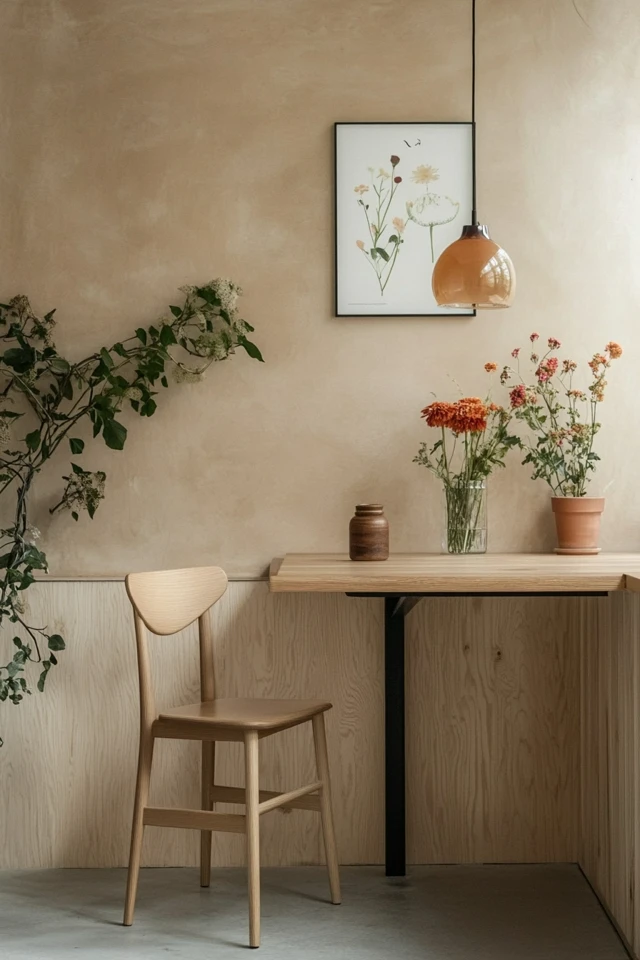
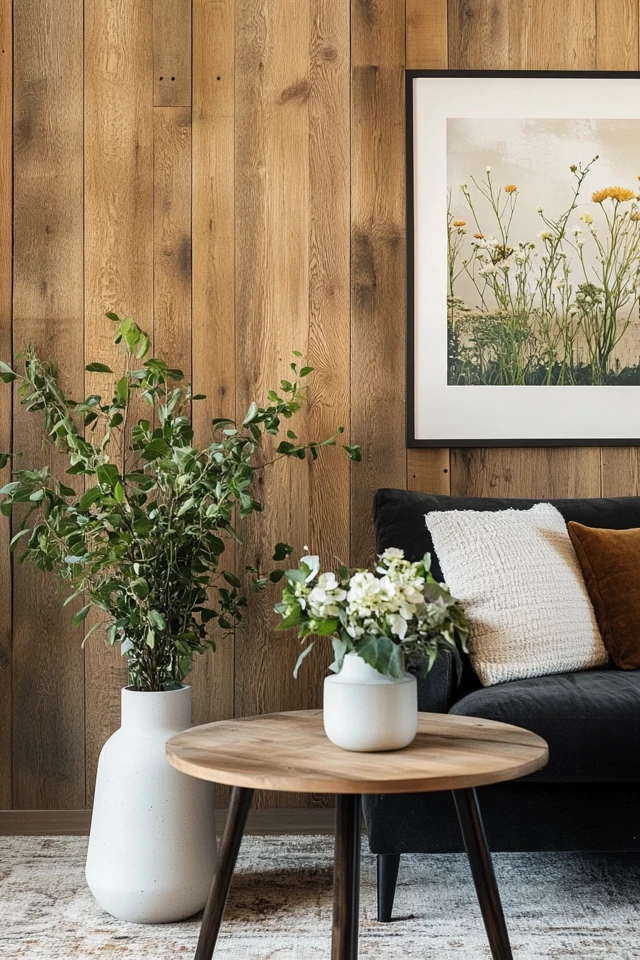
3. Incorporate Wooden Beams or Paneling
Why It Works
Exposed beams and wood paneling add architectural interest and rustic charm to Scandinavian spaces.
How to Style
- Use reclaimed wood beams for ceilings in living rooms or kitchens.
- Add vertical or horizontal wood paneling to accent walls.
- Stick to natural or whitewashed finishes to keep the look light and modern.
Example:
A whitewashed wooden accent wall behind a minimalist bed creates a cozy Scandinavian bedroom.
4. Use Wooden Shelving
Why It Works
Wooden shelves provide functional storage while doubling as a decorative element.
How to Style
- Install floating shelves in light wood for books, plants, or ceramics.
- Pair shelves with black or metal brackets for contrast.
- Keep the decor on the shelves minimal to maintain a clean look.
Example:
A set of light wood floating shelves in a kitchen displaying white plates and clear glass jars adds subtle warmth and texture.
5. Incorporate Wooden Decor
Why It Works
Small wooden decor items can tie a room together without overwhelming the design.
How to Style
- Use wooden trays for organizing candles or small objects.
- Display wooden bowls or sculptures on coffee tables or shelves.
- Opt for natural wood photo frames or mirrors for understated accents.
Styling Tip:
A carved wooden bowl on a white console table adds a touch of Nordic charm.
6. Pair Wood with Neutral Textiles
Why It Works
Soft, neutral textiles enhance the warmth of wood accents while keeping the space cozy.
How to Style
- Layer wool or linen throws on wooden benches or chairs.
- Use neutral-toned cushions to soften wooden seating.
- Pair a jute or wool rug with wooden flooring for added texture.
Example:
A light wood armchair with a beige linen cushion creates a cozy reading nook.
7. Add Wooden Light Fixtures
Why It Works
Wooden light fixtures combine functionality and style, enhancing the natural aesthetic of Scandinavian spaces.
How to Style
- Use wooden pendant lights above dining tables or kitchen islands.
- Opt for floor lamps with wooden bases and fabric shades.
- Pair wooden fixtures with warm white bulbs for a soft, inviting glow.
Example:
A Scandinavian dining room with a rattan pendant light over a light wood table feels effortlessly modern and warm.
8. Combine Wood with Greenery
Why It Works
Plants and wood accents create a natural synergy, bringing life and vibrancy to your space.
How to Style
- Use wooden plant stands or pots for indoor greenery.
- Place plants on wooden shelves for a layered, organic look.
- Choose simple, neutral pots to keep the focus on the wood and greenery.
Styling Tip:
A fiddle-leaf fig in a wooden planter adds height and drama to a Scandinavian-inspired living room.
9. Use Reclaimed or Sustainable Wood
Why It Works
Sustainability is at the heart of Scandinavian design, and reclaimed or sustainably sourced wood fits the ethos perfectly.
How to Style
- Use reclaimed wood for coffee tables, benches, or shelving.
- Look for FSC-certified (Forest Stewardship Council) furniture.
- Choose handmade wooden decor for an artisanal touch.
Example:
A reclaimed wood dining table paired with modern black chairs adds a touch of rustic charm to a minimalist dining room.
10. Add Wooden Frames and Trim
Why It Works
Small wooden details like frames and trim provide subtle warmth without dominating the design.
How to Style
- Use wooden frames for mirrors, windows, or doors.
- Opt for natural wood trim around baseboards or accent walls.
- Pair wooden trim with white walls for a striking contrast.
Example:
A round wooden-framed mirror above a console table creates a simple, stylish focal point in an entryway.
How to Balance Wood Accents in Scandinavian Spaces
- Stick to Light Finishes: Light-toned woods like birch, pine, and oak work best for Scandinavian interiors.
- Mix Materials: Pair wood with stone, metal, or soft textiles for a dynamic yet cohesive look.
- Avoid Overcrowding: Keep wood accents balanced with neutral colors to avoid overwhelming the space.
- Use Matte Finishes: Glossy wood can feel out of place in minimalist spaces, so opt for matte or satin finishes.
- Layer Textures: Combine smooth wooden surfaces with rougher textures like woven rugs or knitted throws.
Conclusion
Wood accents are a timeless way to add warmth and character to Scandinavian spaces. Whether through furniture, decor, or architectural details, wood creates a connection to nature while complementing the minimalist aesthetic of Nordic design.
For me, incorporating wood into my home was about finding balance. A light wood coffee table, floating shelves, and a few wooden decor pieces turned my living room into a cozy retreat without compromising its simplicity.
So, experiment with these ideas, let natural materials take center stage, and transform your Scandinavian space into a warm, inviting haven.
FAQ
What type of wood is best for Scandinavian interiors?
Light woods like oak, birch, and pine are ideal for achieving the warm, airy feel of Scandinavian design.
Can I use dark wood in a Scandinavian space?
Yes, but sparingly. Dark wood can add contrast, but it should be balanced with lighter elements to maintain the minimalist aesthetic.
How do I add wood accents without making the space feel rustic?
Opt for clean lines, light finishes, and modern designs to keep the look contemporary and refined.
What other materials pair well with wood in Scandinavian design?
Wood pairs beautifully with stone, metal, linen, wool, and glass for a cohesive and textured look.
Where can I find Scandinavian-inspired wood furniture and decor?
Look for furniture and decor at stores like IKEA, West Elm, HAY, and Muuto, or check local artisans for unique handcrafted pieces.

